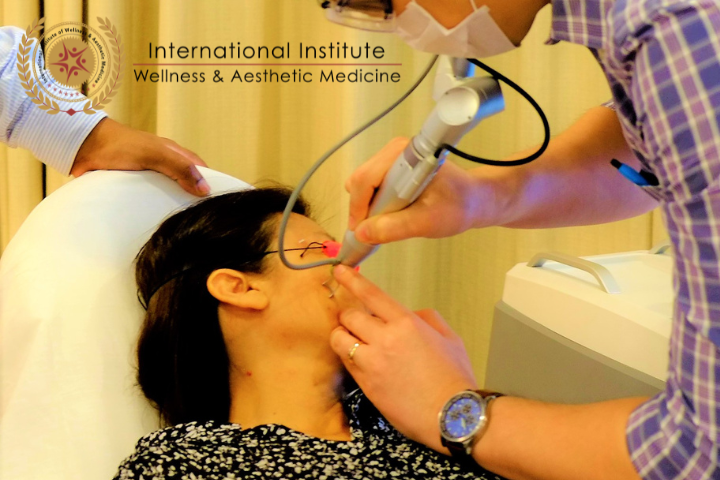Top Cosmetic Evolutions of the Last Decade
In a recent article, we spoke about the major differences between Q-Switch Lasers and Pico Lasers. (Read the article here- Q- Switch Lasers Vs Pico Lasers)
In today’s article, we will help to educate you further about the latest cosmetic evolutions in the last decade.
With the various advancements in the field of aesthetic medicine over the past decade, the demand for cosmetic procedures has risen. Aesthetics is now a budding field that tends to work towards the improvement of an individual’s overall cosmetic appearance with the help of various non-surgical cosmetic treatments such as chemical peels, injectables like Botox and fillers, anti-aging devices ranging from lasers to radiofrequency, ultrasound, and automated needling along with body contouring that involves fat reduction.
Some of the most important advancements in the field of aesthetic medicines are as follows-
Cryolipolysis
Cryolipolysis, commonly referred to as "CoolSculpting" is one of the most popular nonsurgical fat reduction treatments, by patients, which uses cold temperature to break down fat cells. The fat cells are particularly susceptible to the effects of cold, unlike other types of cells. While the fat cells freeze, the skin, and other structures are spared from injury.
After a proper assessment of the dimensions and shape of the fatty bulge to be treated by the aesthetic practitioner, an applicator of the appropriate size and curvature is chosen. The area of concern is marked to identify the site for applicator placement. A gel pad is placed to protect the skin. The applicator is applied and the bulge is vacuumed into the hollow of the applicator. The temperature inside the applicator drops, and as it does so, the area numbs. Patients sometimes experience discomfort from the vacuum's pull on their tissue, but this resolves within minutes, once the area is numb. After the hour-long treatment procedure, the vacuum turns off, the applicator is removed and the area is massaged, which may improve the final results.

Fat grafting
Fat grafting also referred to as fat transfer or fat injections, is the surgical process by which fat is transferred from one area of the body to another area. The surgical goal is to improve or augment the area where the fat is injected. Since its introduction, fat grafting has become increasingly popular.
The most commonly used methods to prepare fat grafts are sedimentation, filtering, washing, and centrifugation. Fat processing is necessary because the lipoaspirate contains not only adipocytes but also collagen fibers, blood, and debris. These elements can cause inflammation at the recipient site, which can be detrimental for the fat graft. Blood must be extracted because blood accelerates the degradation of the transplanted fat. Moreover, the injection of debris gives an erroneous impression of the volume of correction because the debris will be absorbed later after a few hours.
Radiofrequency for skin rejuvenation
Multiple therapies involving ablative and nonablative techniques have been developed for the rejuvenation of photodamaged skin.
The monopolar radiofrequency (RF) device is different from cosmetic lasers, as it produces an electric current rather than light for overall skin rejuvenation. The energy produced is not liable to be diminished by tissue diffraction or absorption by epidermal melanin. As a result, RF-based systems are suitable for all skin types. Monopolar radiofrequency (RF) therapy delivers uniform heat at controlled depth to dermal layers, causing direct collagen contraction and immediate skin tightening. Subsequent remodeling and reorientation of collagen bundles and the formation of new collagen happen over months after the treatment procedure.
It is prudent that all Aesthetic practitioners must undergo proper training in Aesthetic medicine. The practitioner must balance between benefits & risks of the Aesthetic procedure, and steps to mitigate complications, if it occurs. At IIWAM, we call it, understanding the procedure, the product, and the patient, and our trainers pay utmost attention to teaching the following subjects when it comes to Aesthetic treatments under our trusted online international cosmetology course .
Assoc. Prof Dr. Morthy, the lead trainer, medical director of the International Institute of Wellness & Aesthetic Medicine (IIWAM), makes sure that all the students obtain the proper skills so that all the patients are safe, which is of prime importance.
About IIWAM Aesthetic Education
At IIWAM, we provide an International Aesthetic Certification program and also Advanced Online Aesthetic Courses for Doctors, Dentists, Nurses, Aestheticians, and Spa Owners in the field of Aesthetic Medicine.
Our Institute is based in Malaysia and has international students from the Philippines, Myanmar, Cambodia, India, Indonesia, and other parts of Asia. With our insignia of “Be Certified, Be Recognized”, we develop knowledgeable, skilled, and confident Aesthetic practitioners of international repute. Our Aesthetic training focuses on teaching the principles of Aesthetic procedures before venturing into Aesthetic clinical skills. IIWAM training Programs are a combination of Onsite Training, LIVE Online Webinars, and Online Learning. IIWAM is the first Institute in the World to have its Programs assured by City & Guilds of London and certified by European International University. IIWAM is also a registered CPD Training provider with CPD Standards Office in the UK and by CPD Malaysian Medical Association.
Onboard is our Assoc. Prof Dr. Morthy, the lead trainer, medical director of the International Institute of Wellness &Aesthetic Medicine (IIWAM), formerly known as Aesthetic Academy Asia (http://www.iiwam.ac/).
In the Aesthetic part of our Institute, we provide Advanced Aesthetic Medical Procedures that are Safe, Effective, and Affordable, offering a wide range of specialized treatments for All Your Aesthetic Needs.

